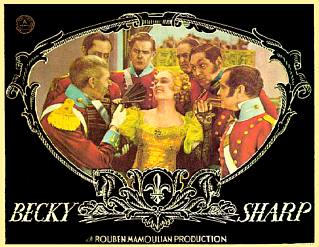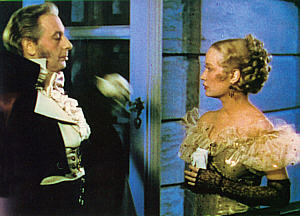ALL SINGING, ALL DANCING, ALL COLOR!
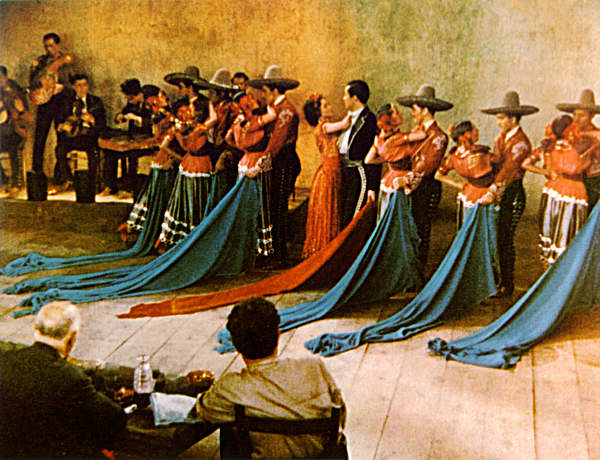
La Cucaracha (1934)
In 1934, financier and longtime Kalmus associate Jock Whitney decided to jump into the movie producer business and make the first live action feature film. Creating Pioneer Pictures, he carefully dipped a toe in the water by first producing a two-reel short subject, La Cucaracha, a musical comedy. The budget of $50,000 was more than triple that of a black and white film of similar length. The film, released through RKO, was successful and received favorable reviews for the use of the new palette. Technicolor live action films saw their birth in a film named "Cockroach". Fortunately it was not an omen.
The new 3-strip process was used in short sequences in five or six features in 1934. It is said that the public now speculated on what film would be the first full length feature to utilize the NEW TECHNICOLOR. Whether or not La Cucaracha and those brief scenes made that big an impression on the general movie going audience is debatable, but the property that would receive the first color treatment was the novel Vanity Fair which was produced under the title of Becky Sharp by Pioneer in 1935.
Above left, a British lobby card, hand tinted as was common up into the 1960s, seems to lack the blue that distinguished the film from earlier color efforts. But the film itself, seen in a frame above right, had plenty of blue. The cast included Sir Cedric Hardwicke and the lovely Miriam Hopkins as Becky. Below, a less blue frame from the film.
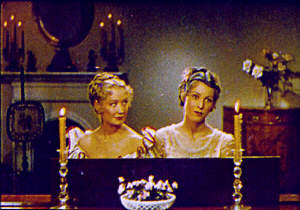
Becky Sharp was not a critical or financial blockbuster. As with anything new, the critics dwelled on the use of color, as had the film makers, with some speaking favorably and many condemning the overuse of color and blue specifically. It must be understood that this was the first time that the masses had seen the full color spectrum on the screen, and while it might have appeared garish in 1935, it is quite likely that today's audiences, saturated with color in every medium, would give little thought to the palette used.
THE RAPE OF BECKY SHARP
CLICK HERE to see a comparison of the film in Technicolor and Cinecolor
The next major step for Technicolor production was Paramount's Trail of the Lonesome Pine.
Above left, a lobby card with Technicolor getting a somewhat bigger billing than Douglas Fairbanks had given it. Above right, a rare Kodachrome production still of location photography. Sylvia Sidney is the subject of the camera. Below is a frame from the film.
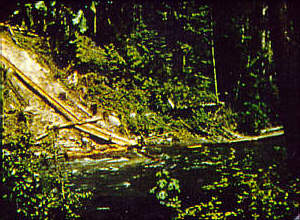
When Paramount and director Henry Hathaway advised Technicolor that they wanted to shoot Trail of the Lonesome Pine on location they were told that it simply couldn't be done. All earlier films had been made on studio sound stages where the light and color could be controlled. Despite the misgivings of Technicolor, the film went outdoors and the results were very successful and opened a world for all color features to come. Ironically, the director of photography, Robert Bruce, had only shot documentaries up to that point, and after this ground breaking film he returned to documentaries for the rest of his career.
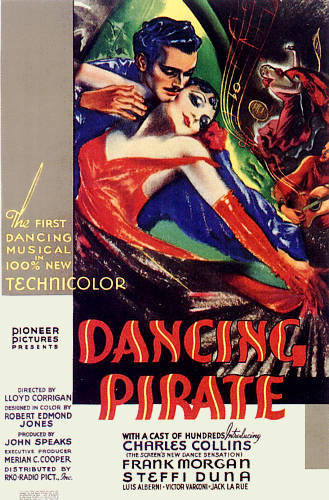 Rape, Pillage, and Dance, Dance, Dance!
Rape, Pillage, and Dance, Dance, Dance!
The First Dancing Musical in 100% New TechnicolorAnother early effort by the Whitney/Cooper group through their Pioneer Pictures Corp. There seems to be a strong Hispanic flare to many of Pioneer's vehicles, perhaps inspired by the bright colors of the costumes associated with Hispaniola. Never having seen this film, the curator is a bit intrigued at just how long a dancing pirate would survive among the more typical non-dancing buccaneers. Perhaps this film was an inspiration for the positively ridiculous Frank Sinatra Technicolor picture, The Kissing Bandit. Despite the apparent silliness of a dancing pirate, the story is based on fact. Go figure.


